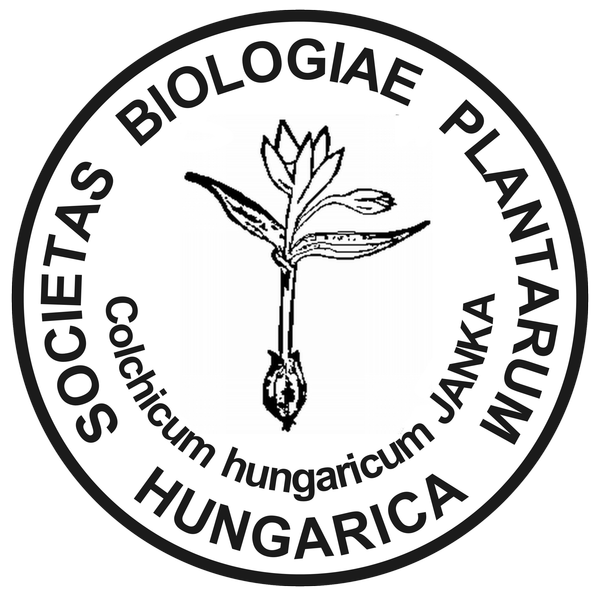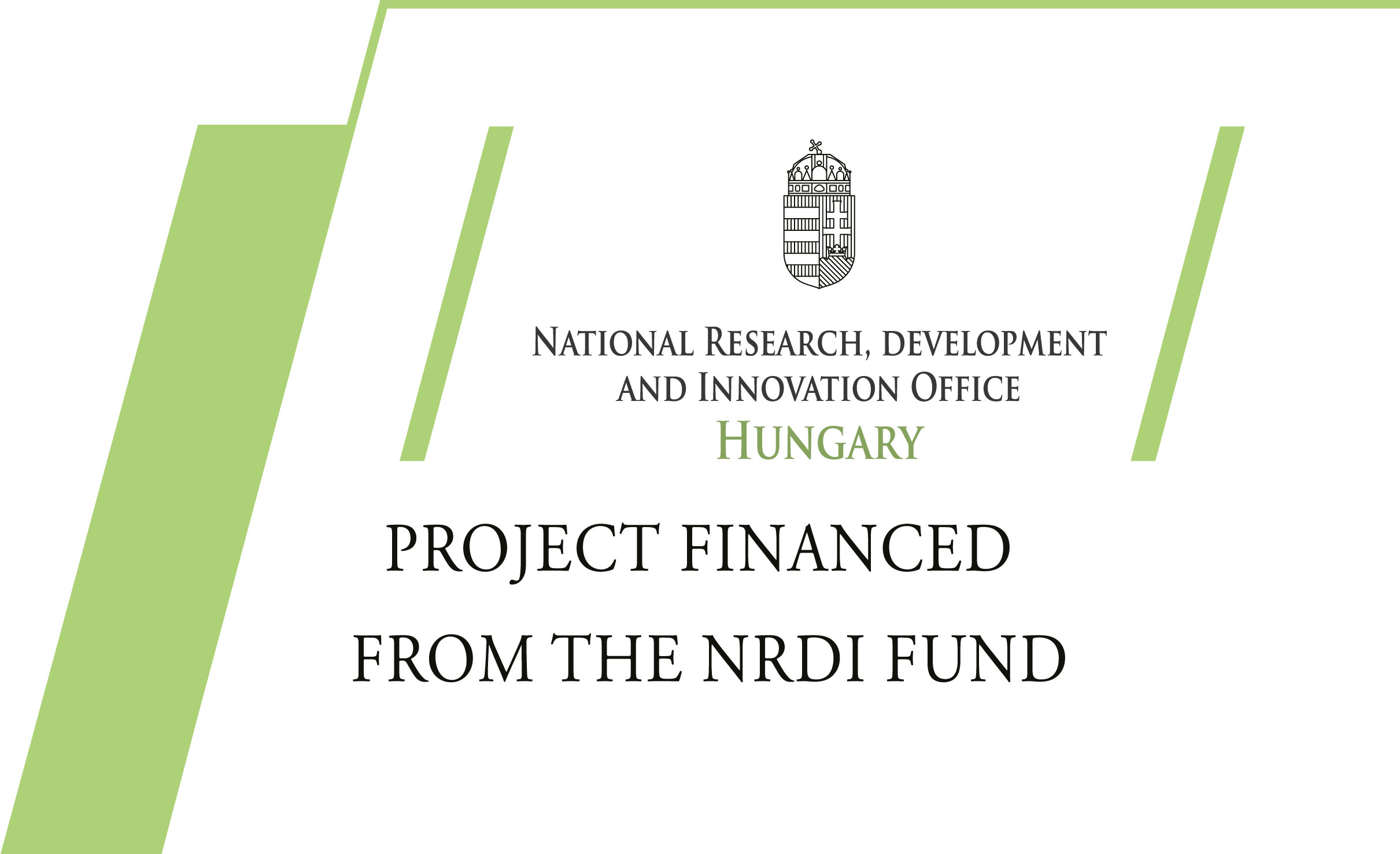| Wednesday | |||
| 25 June 2025 | |||
| 09:00- | Check in - Arrival and registration | ||
| 11:00 - 11:35 | Opening ceremony - General AssemblyChair: János Györgyey President of FESPB |
||
| 11:15 - 11:30 | PL-1 László ErdeiFrom FESPP to FESPB and beyond | ||
| 11:35 - 12:10 | K-1 Christine Foyer Oxidative signalling in plants | ||
| 12:15 - 13:15 | Lunch Restaurant of the Venue |
||
| 13:15 - 14:30 | Redox biology Chairs: Christine Foyer, Gábor KocsyPátria hall | Morphogenesis and reproduction Chairs: Thomas Dresselhaus, Attila FehérBartók room | Beneficial plant-microbe interactions Chairs: Péter Kaló, Stephan PollmannLehár room |
| 13:15 - 13:40 | O-121 Gábor Kocsy Redox- and spectrum-dependent modulation of microRNAs and their targets during stress adaptation | O-93 Zoltán Magyar RETINOBLASTOMA-RELATED has both canonical and non-canonical regulatory functions during thermo-morphogenic responses in Arabidopsis seedlings | O-41 Raffaella Balestrini Exploiting tailored microbial consortia to enhance sustainability and resilience of grapevine cultivation |
| 13:40 - 13:55 | O-122 Tibor Janda Light and temperature-dependent shoot-root signalling pathways in cereals | O-94 Diksha Bhola Pectin chemistry effects non-uniform cell growth during mesophyll morphogenesis | O-42 Valeria Todeschini Growth and secondary metabolite modulation by soil beneficial microorganisms in Artemisia annua plants |
| 13:55 - 14:10 | O-123 Filipa Sousa Improving the resilience of chestnut plants to climate change: The role of stress priming | O-95 Elisa Maricchiolo ERAD-mediated maturation of the regulatory protein of plant meristematic cells CLAVATA 3 emerged during evolution from algae to higher plants | O-43 Joana Belo Cork endophytic microbiome: Characterization and impact on plant development |
| 14:10 - 14:25 | O-124 Michela Molinari Unraveling sulphur metabolism and miR395 dynamics in salt- tolerant and sensitive rice varieties | O-96 Pavel Pashkovskiy The role of phytochromes A and B in the regulation of fruit metabolism and chloroplast ultrastructure in tomato leaves under different ratios of red and far-red light | O-44 Lalie Leclercq Unveiling the hidden allies of industrial chicory: A metagenomic exploration of rhizospheric microbiota and their impact on productivity and plant health |
| 14:25 - 15:00 | Coffee break | ||
| 15:00 - 15:40 | K-2 Jiří Friml Auxin signaling revisited: New roles for second messengers | ||
| 15:40 - 16:10 | PL-2 FESPB Award talk: Noel Blanco-TouriñánHow to build a root system: A focus on hormone perception, specificity, and vascular connections | ||
| 16:15 - 17:25 | Abiotic stress - Osmotic Chairs: Jolán Csiszár, Tibor Janda Pátria hall | Morphogenesis and reproduction Chairs: Thomas Dresselhaus, Attila FehérBartók room | Beneficial plant-microbe interactions Chairs: Péter Kaló, Stephan PollmannLehár room |
| 16:15 - 16:40 | O-05 Mai-He Li Root carbon shortage leads to mortality of drought-stressed trees | O-97 Martin Bayer How parental factors shape the plant embryo | O-45 Stephan Pollmann Serendipita indica promotes Arabidopsis thaliana growth through nuanced modulation of auxin homeostasis and transport |
| 16:40 - 16:55 | O-06 Bekim Gashi Recovery of photosynthetic activity in resurrection plants Ramonda serbica and Ramonda nathaliae after freezing-induced desiccation | O-98 Dunja Leljak-Levanić Somatic embryogenesis is an ancestral reproductive strategy in plants | O-46 Bruno Sousa Enhancing tomato plants' resilience to climate change: The role of mycorrhization and strigolactones |
| 16:55 - 17:10 | O-07 Youcef Haddad Elucidate the reality and functionality of Natural Deep Eutectic Solvents (NaDES) formation in desiccation tolerant seeds | O-99 Davide Gerna Intracellular glass fragility distinguishes the desiccation response of embryonic axes from recalcitrant and orthodox seeds | O-47 Rui Lima Symbiotic NCR-Like peptides and bacteroid differentiation in Amorpha fruticosa–Mesorhizobium Amorphae symbiosis |
| 17:10 - 17:25 | O-08 Laura Zsigmond Mitochondrial electron transport mutants modulate drought tolerance in Arabidopsis | O-100 Afsheen Malik Insights into the sex determination mechanisms and inheritance of dioecy and monoecy traits in Cannabis sativa (hemp) | O-48 Henrike Würsig Responses of maize roots and the rhizosphere microbiome to alternating precipitation: Insights from a three-year field study |
| 18:00 - 20:00 | Welcome Reception Aula and mirror corridor |
||
| Thursday | |||
| 26 June 2025 | |||
| 08:30 - | Registration desk open | ||
| 09:00 - 09:40 | K-3 Marcel JansenDuckweed (Lemnaceae); The nutrient recyclers of the circular economy | ||
| 09:45 - 11:00 | Abiotic Stress - Osmotic 2 Chairs: Jolán Csiszár, Tibor Janda Pátria hall | Aquatic plant biology and algal biotechnology Chairs: Marcel Jansen, Gergely Maróti Bartók room | Nanomaterials in agriculture Chairs: Vasileios Fotopoulos, Ferenc FodorLehár room |
| 09:45 - 10:10 | O-09 Ilona Mészáros Responses of intrinsic water-use efficiency and tree growth of sessile oak to climate change in North Hungarian central range | O-33 Stefano Cazzaniga Turning a green alga red: Astaxanthin biosynthetic pathway in Chlamydomonas reinhardtii improves resistance to light stress and biomass productivity at high irradiances | O-101 Biljana Balen Interactive effects of silver nanoparticles and microplastics on oxidative stress in Allium cepa roots |
| 10:10 - 10:25 | O-10 Guido DomingoThe root code cracked: deciphering wheat exudation during drought | O-34 Rodrigo Bedera-García Inositol polyphosphates regulate resilient mechanisms in the green alga Chlamydomonas reinhardtii to adapt to extreme nutrient conditions | O-102 Pedro Diaz-Vivancos Effect of silver nanoparticles (AgNPs) in apricot seedlings submitted to mild salinity |
| 10:25 - 10:40 | O-11 Magdalena KorekMutation in a barley strigolactone repressor HvD53A impairs photosynthesis but increases drought tolerance | O-35 Matteo Ballottari Abiotic stress-induced chloroplast and cytosolic Ca2+ dynamics in the green alga Chlamydomonas reinhardtii | O-103 Zoltán Molnár Integration of chitosan nanoparticles and cyanobacteria biomass in agricultural applications to enhance cereal crop productivity |
| 10:40 - 10:55 | O-12 Davide GiordanoThermotolerance of natural Arabidopsis accessions from Catalonia growing under salinity | O-36 Viktor Oláh A light touch: Protein output of duckweed cultures as a function of light intensity | O-104 Aradhana Mishra Enhanced Cellular Internalization: A predominant bactericidal mechanism of biogenic nanoparticles over chemical counterparts |
| 11:00 - 11:30 | Coffee break | ||
| 11:30 - 12:40 | Abiotic Stress - Toxic metals Chairs: Csaba Máthé, Ferenc Fodor Pátria hall | Aquatic plant biology and algal biotechnology Chairs: Marcel Jansen, Gergely Maróti Bartók room | Immunity and plant-plant interactions Chairs: Isabel Díaz, Lóránt KirályLehár room |
| 11:30 - 11:55 | O-21 Ferenc FodorHeavy metal accumulation and tolerance in Szarvasi-1 energy grass | O-37 Benedetta Mattei Modeling of microalgal growth and biochemical composition under nitrogen fluctuations | O-85 Jakub Michalski Promising candidates for new PAMPs - how plants handle bacterial cyclic dinucleotides |
| 11:55 - 12:10 | O-22 Magdalena Krzesłowska Pectinous cell wall thickenings formation - a widespread defence strategy in plants growing on substrates polluted with toxic trace metals and metalloids | O-38 Gergely Maróti Inter-kingdom interactions within natural and synthetic algal-bacterial communities | O-86 Ravinder Goyal Crop root secretions hold promise of Aphanomyces root rot management in pulses |
| 12:10 - 12:25 | O-23 Francesca LanniEvaluation of the sensitivity to inorganic arsenic of Carnaroli rice plant (Oryza sativa L.) | O-39 Laura Morello Interspecific hybrids and polyploids in duckweed | O-87 Hana Leontovyčová Pathogen's playbook: Phytohormone production and manipulation by Leptosphaeria maculans |
| 12:25 - 12:40 | O-24 Altafur Rahman Modulation of cadmium stress responses in wheat by putrescine pre-treatment under blue and white light | O-88 Magdalena Arasimowicz-Jelonek Nitric oxide/nitroxyl interplay during plant-pathogen interaction | |
| 12:40 - 13:45 | Lunch | ||
| 13:45 - 14:25 | K-4 Éva HidegAntioxidant aspects of UV effects on leaves | ||
| 14:25 - 14:55 | PL-3 FESPB Award talk: Marta Nunes da Silva Inside the host: Mechanisms of tolerance and control against vascular pathogens | ||
| 14:55 - 15:25 | Coffee break | ||
| 15:25 - 16:40 | Abiotic Stress - Temperature Chairs: Laura De Gara, Tibor Janda Pátria hall | Secondary metabolism Chairs: Éva Hideg, Gabriella Szalai Bartók room | Immunity and plant-plant interactions Chairs: Isabel Díaz, Lóránt KirályLehár room |
| 15:25 - 15:50 | O-17 Sylva Prerostova High light as a tool for improving thermotolerance of rice plants through elevated cytokinin levels | O-125 Antoine Mallavergne All in one: A serine carboxypeptidase-like protein catalyzes synthesis of chicoric and isochlorogenic acids in Cichorium intybus | O-89 Yehoram Leshem Extracellular microRNAs: Plants' first line of defense? |
| 15:50 - 16:05 | O-18 Tibor Csorba Transcription fidelity contributes to heat stress survival in Arabidopsis | O-126 Gaëtan Kientz Elucidation of the biosynthetic pathway of two C-glucosyl flavones accumulated in winter flax (Linum usitatissimum L.) | O-90 Károly Fátyol Dissection of the antiviral RNA silencing pathway of Nicotiana benthamiana by genome editing |
| 16:05 - 16:20 | O-19 Luisa Friulla Heat tolerance and functional traits of Mediterranean tree species: A comparison between deciduous and evergreen species | O-127 Camilo López-Cristoffanini Effect of a pre-harvest treatment with harvistatm on the nutraceutical quality and volatile compound profile of apples | O-91 Éva Várallyay Investigation of VSR coding capacity of fruit tree infecting viruses |
| 16:20 - 16:35 | O-20 Magdalena Rys Physiological and biochemical changes occurring during deacclimation of oilseed rape – relation to frost tolerance | O-128 Nadeera Yumali Wiyana HewageGenetics and biochemistry of sticky trichomes | O-92 Mesfin Haile KebedeGenotypic screening of Capsicum germplasm for disease resistance using fluidigm SNP markers |
| 16:40 - 18:10 | Posters - ODD numbered posters | ||
| List of Accepted Posters | |||
| Application of genetic improvements | |||
| P-001 | Namira Arfa - Transgene-free gene specific editing of maize genome with synthetic oligonucleotides (Application of genetic improvements) | ||
| P-002 | Anshika Bhatla - Tiny hairs, big impact: Molecular insights into tomato trichome density (Application of genetic improvements) | ||
| P-003 | Juhui Do - Development of genetically edited tomatoes with reduced histamine content using the CRISPR/Cas9 system (Application of genetic improvements) | ||
| P-004 | Dariusz Grzebelus - Identification of a genomic region governing monogermy in sugar beet (Application of genetic improvements) | ||
| P-005 | Hyun Jo - Genetic dissection of bentazone tolerance loci in cultivated soybean: A Genome-wide assication study (Application of genetic improvements) | ||
| P-006 | András Kis - Application of wheat × barley intergeneric hybrids in genome editing (Application of genetic improvements) | ||
| P-007 | Mohamed Kouhen - Validation of the DRO1 gene in tomato under drought stress: Insights into root architecture and drought adaptation (Application of genetic improvements) | ||
| P-008 | Bettina Nagy - Increasing the efficiency of directed gene-specific mutagenesis by heat and chromatin modification of de-differentiated maize cells (Application of genetic improvements) | ||
| P-009 | Eungyung Song - uORF-targeted genome editing for lycopene enhancement in tomato (Application of genetic improvements) | ||
| P-010 | Giorgia Sportelli - Towards genome editing strategies in olive (Application of genetic improvements) | ||
| P-011 | Szabolcs Török - Comparison of different gene editing methods for the introduction of targeted point mutations into corn (Zea mays) cell cultures (Application of genetic improvements) | ||
| Aquatic plant biology and algal biotechnology | |||
| P-012 | Raja Amri - Exogenous abscisic acid alters the growth, turion yield and biochemical composition of four ecotypes of giant duckweed, Spirodela polyrhiza (L.) schleiden (Aquatic plant biology and algal biotechnology) | ||
| P-013 | Barbara Billè - A sustainable approach to mitigating emerging pollutant toxicity and enhancing plant resistance to abiotic stress (Aquatic plant biology and algal biotechnology) | ||
| P-014 | Dong-Woog Choi - Identification and characterization of a heat shock transcription factor (HSF) in the marine red alga Pyropia yezoensis (Rhodophyta) (Aquatic plant biology and algal biotechnology) | ||
| P-015 | Brigitta Roxána Horváthné Dani - Stress effect of surfactants on the Lemna minor (Aquatic plant biology and algal biotechnology) | ||
| P-016 | M. Adelaide Iannelli - Promising perspectives on the exploitation of dairy effluent as a substrate for duckweed biomass production (Aquatic plant biology and algal biotechnology) | ||
| P-017 | Wogene Solomon Kabato - Microalgae-based approaches for soil health improvement, crop growth, and climate mitigation (Aquatic plant biology and algal biotechnology) | ||
| P-018 | Joonho Park - Interactive effects of polystyrene micro- and nanoplastics and trace elements on oxidative stress and central metabolism in Lemna perpusilla (Aquatic plant biology and algal biotechnology) | ||
| P-019 | Emma Serrano Perez - Unveiling molecular insights into the role of Raphidocelis subcapitata in enhancing essential fatty acids for biofuel production under nitrate limitations (Aquatic plant biology and algal biotechnology) | ||
| P-020 | Mirta Tkalec - Combined toxicity of silver nanoparticles and microplastics on the aquatic plant Lemna minor (Aquatic plant biology and algal biotechnology) | ||
| Beneficial plant-microbe interactions | |||
| P-021 | Veronika Berková - Molecular mechanisms of fungal-mediated cadmium stress alleviation in flax: A multi-omics approach (Beneficial plant-microbe interactions) | ||
| P-022 | Pierpaolo Del Boccio - Application of β-cyclocitric acid affects mycorrhizal colonization and response at the molecular level in tomato plants (Beneficial plant-microbe interactions) | ||
| P-023 | Philippe Etienne - Silicon: A key modulator of nodule metabolism in Trifolium incarnatum (Beneficial plant-microbe interactions) | ||
| P-024 | Magdolna Gombos - Analyzing the cell cycle inhibitor RETINOBLASTOMA-RELATED protein in Medicago truncatula during nodule development (Beneficial plant-microbe interactions) | ||
| P-025 | German Gomez Fernandez - Genome-wide identification and expression profiling of ammonium and nitrate transporters in Medicago truncatula under nitrogen-fixing symbiotic conditions (Beneficial plant-microbe interactions) | ||
| P-026 | Flóra Boglárka Horváth - A reclamation project on dredged mud from Lake Balaton: Seasonal changes in the physiology of Szarvasi-1 energy grass and the connected bacterial community composition in the rhizosphere (Beneficial plant-microbe interactions) | ||
| P-027 | Nicolás Marro - Context-dependent interaction between plant parasitic nematodes and mycorrhiza: A meta-analytical perspective and experimental approach (Beneficial plant-microbe interactions) | ||
| P-028 | Elmira Mohammadi Eghbash - An inversion in the Medicago truncatula dnf6 mutant affects the function of the citrate transporter MtMATE67 resulting in defective symbiotic nitrogen fixation (Beneficial plant-microbe interactions) | ||
| P-029 | Justyna Nawrocka - ‘Shining chloroplasts’ – Temporal accumulation of nitric oxide in changing chloroplasts during protection of tomato plants against gray mold disease by application of Trichoderma biocontrol agents (Beneficial plant-microbe interactions) | ||
| P-030 | Michele Perazzolli - Tomato genotype and rhizosphere microbiome can contribute to water stress tolerance (Beneficial plant-microbe interactions) | ||
| P-031 | Patricio Ramos - Enhancing strawberry aroma under drought stress: The role of antarctic fungi in modulating volatile ester production (Beneficial plant-microbe interactions) | ||
| P-032 | Ah-Young Shin - A novel plant growth-promoting rhizobacteria (PGPR) promotes plant root growth, characterized by genome sequencing and functional analysis (Beneficial plant-microbe interactions) | ||
| P-033 | Michela Zottini - Investigating the role of endophytes in enhancing grapevine resilience to drought (Beneficial plant-microbe interactions) | ||
| Biotechnology and synthetic biology | |||
| P-034 | Fatemeh Gholizadehfahandari - identification and functional analysis of high-affinity K+ transporters (HKTs) in wheat under salinity stress (Biotechnology and synthetic biology) | ||
| P-035 | Silvia Gianoglio - StrigoSense: a novel versatile biosensor of strigolactone responses in plants (Biotechnology and synthetic biology) | ||
| P-036 | Ewa Grzebelus - Improvement in plant regeneration from callus-derived protoplast cultures of garlic and onion (Biotechnology and synthetic biology) | ||
| P-037 | László Kaszás - Technological development of in vitro micropropagation of Jerusalem artichoke (Helianthus tuberosus L.) (Biotechnology and synthetic biology) | ||
| P-038 | Kristóf Kecskés - Creating large-scale deletions in rhizobia using a compact Cascade-Cas3 system (Biotechnology and synthetic biology) | ||
| P-039 | Jisoo Kim - Comparison of In-solution, FASP, S-trap, and SP3 sample preparation methods for LC-MS/MS-based proteomic analysis of three different rice tissues (Biotechnology and synthetic biology) | ||
| P-040 | Yong-Min Kim - Identification and characterization of biological parts in plants (Biotechnology and synthetic biology) | ||
| P-041 | Jana Libantová - Biochemical insights into a chitinase involved in the digestion of Drosera binata (Biotechnology and synthetic biology) | ||
| P-042 | Aleksandra Liszka - The Contribution of VND family transcription factors to the diversity of plant secondary cell walls (Biotechnology and synthetic biology) | ||
| P-043 | Rodrigo Martínez Gallardo - Analysis of the possible function of overexpressing class ii trehalose phosphate synthase (TPS) genes in Arabidopsis thaliana. (Biotechnology and synthetic biology) | ||
| P-044 | Renu - Functional analysis of whirly proteins in Arabidopsis thaliana (Biotechnology and synthetic biology) | ||
| P-045 | Stamatis Rigas - How olive fruits make their oil: A Transcriptomic and fatty acid profiling study (Biotechnology and synthetic biology) | ||
| P-046 | Ah-Young Shin - Comparative analysis of immunogenicity and protection of Nipah virus vaccine candidates produced in Nicotiana benthamiana (Biotechnology and synthetic biology) | ||
| Cell biology | |||
| P-047 | Patricia Abril Urías - Auxin’s role during endoparasitic nematodes feeding-sites formation (Cell biology) | ||
| P-048 | Abu Imran Baba - RGII dimerization defects uncover a new pathway for cell adhesion in Arabidopsis (Cell biology) | ||
| P-049 | Won Choi - Functional characterization of nadph-cytochrome P450 reductase driven from tomato (Cell biology) | ||
| P-050 | Erika Chonata Jimenez - Centromere dynamics in mitotic and meiotic cells of common barley as revealed by the construction of CENH3-dsRed fluorescent reporter lines (Cell biology) | ||
| P-051 | Ádám Barnabás Hajnal - Computational modelling of auxin, cytokinin, and salicylic acid binding by tomato Phi class glutathione transferases (Cell biology) | ||
| P-052 | Kyoung Ah Kang - Korean red ginseng main component, Rb1, attenuated particulate matter-induced senescence in skin keratinocytes (Cell biology) | ||
| P-053 | Magdalena Kopec - Deciphering protein interactome of Solanum lycopersicum through Yeast Two-Hybrid high throughput screening (Cell biology) | ||
| P-054 | Chinaza Okafor - Toolbox for measuring in vitro and in planta cAMP production (Cell biology) | ||
| P-055 | Ewelina Paluch-Lubawa - Regulatory role of spermidine during leaf senescence via eIF5A (in)dependent manner (Cell biology) | ||
| P-056 | Mei Jing Piao - Eckol attenuates fine particulate matter-induced cellular senescence by regulating antioxidant enzymes and matrix metalloproteinases (Cell biology) | ||
| P-057 | Zhongqin Zhang - Adenylate cyclase activity of 14-3-3 proteins in plants (Cell biology) | ||
| Crop adaptation to climate change | |||
| P-058 | Oqba Basal - Chickpea for sustainable agriculture under a changing climate in Hungary: Effects of sowing date on yield and seed quality under supplemental irrigation (Crop adaptation to climate change) | ||
| P-059 | Péter Borbély - Pre-hardening induced by blue or far-red light supplementation in leaves of the RHT12 wheat dwarfing line: effects on metabolism, freezing tolerance, and gibberellin levels (Crop adaptation to climate change) | ||
| P-060 | Jung-Il Cho - The Influence of high temperature and elevated CO2 concentration on potato growth and yield (Crop adaptation to climate change) | ||
| P-061 | Liesel Gamarra Reinoso - How does the transcriptomic profile of barley change when grown with the addition of inorganic carbon to the roots? (Crop adaptation to climate change) | ||
| P-062 | Choonkyun Jung - Cis-natural antisense transcript Dof2NAT promotes early heading and drought tolerance by increasing Dof2 expression in rice (Crop adaptation to climate change) | ||
| P-063 | Kamal Kant - Increased expression of AtSPQ protein improves drought tolerance in Brassica napus (Crop adaptation to climate change) | ||
| P-064 | Tzu-Chiao Liao - Transcriptome Analysis of Various Sweet Potato (Ipomoea batatas) Cultivars in Taiwan using Next-generation Sequencing (Crop adaptation to climate change) | ||
| P-065 | George Mackay - A tuneable molecular approach to guarantee light-induced flowering in future climates (Crop adaptation to climate change) | ||
| P-066 | Iman Mirmazloum - Foliar application of brassinosteroids: impact on harvest and post-harvest quality of 'Flame Seedless' grapevine in open field and covered systems (Crop adaptation to climate change) | ||
| P-067 | Costantino Paciolla - Biometrical and biochemical response to thermal stress in tomato plants grown under LED lighting (Crop adaptation to climate change) | ||
| P-068 | Niken Permatasari - Drought, salinity, and their combination affect the growth and secondary metabolites of tomato (Solanum lycopersicum L.) (Crop adaptation to climate change) | ||
| P-069 | Klára Pokovai - Climate change related lessons learned from a long-term field experiment with maize (Crop adaptation to climate change) | ||
| P-070 | Barbara Ramaldes - Stomatal plasticity supports resilience of Myrsine coriacea to environmental changes in the Brazilian Atlantic Forest (Crop adaptation to climate change) | ||
| P-071 | Iwona Sadura-Berg - Molecular dynamics of chloroplast membranes and COR14b gene expression in cold-acclimated and deacclimated barley HvBRI1 and HvCPD mutants. Relation to plant frost tolerance (Crop adaptation to climate change) | ||
| P-072 | Gabriella Sonnante - Response to drought stress in traditional varieties of durum wheat (Crop adaptation to climate change) | ||
| P-073 | Gabriella Szalai - Responses to various environmental stresses of two different Eruca ecotypes grown under the same controlled conditions (Crop adaptation to climate change) | ||
| P-074 | Chin-Ying Yang - Integration of multi-omics data from core sweet potato germplasm in Taiwan and the development of digital breeding platforms (Crop adaptation to climate change) | ||
| P-075 | Ching-hui Yeh - Functional roles of sHSPs in thermotolerance and heavy metal stress resistance in rice (Crop adaptation to climate change) | ||
| P-076 | Xudong Zhang - Gas exchange and ionome profiling across multiple tissues and cell types under salt stress: Distinct tolerance strategies in faba bean (Vicia faba) and maize (Zea mays) (Crop adaptation to climate change) | ||
| P-077 | Maria Zorzanelli - Post-El Niño drought effects on the functional traits and community structure of Atlantic forest trees in Brazil (Crop adaptation to climate change) | ||
| Dialogue with society | |||
| P-078 | Szidónia Sütő - Discovery, understanding, engagement: Opportunities for research-based learning in plant biology education (Dialogue with society) | ||
| Genomics and epigenomics | |||
| P-079 | Auwalu Abdu - Investigation of the diverse roles of RNA-directed DNA methylation in barley (Genomics and epigenomics) | ||
| P-080 | Mishaneh Asgari - Widespread alternative transcription start site selection in Norway spruce results in tissue-specific proteoforms (Genomics and epigenomics) | ||
| P-081 | Pedro Barros - Gene co-expression analysis identifies candidate epigenetic regulatory modules of periderm development (Genomics and epigenomics) | ||
| P-082 | Grzegorz Bartoszewski - Identification of a cp-2 gene controlling compact plant architecture in cucumber (Genomics and epigenomics) | ||
| P-083 | Magda Grabsztunowicz - DNA methylation regulates aging in monocarpic plants (Genomics and epigenomics) | ||
| P-084 | Mok Hur - RT-qPCR analysis of candidate genes related to self-incompatibility in Astragalus membranaceus (Genomics and epigenomics) | ||
| P-085 | Yong-Min Kim - Paleo-polyploidization in Hibiscus syriacus adapting to changing climates during evolution (Genomics and epigenomics) | ||
| P-086 | Zsófia Kovács - ISSR and cpDNA analyses to assess genetic diversity status of the endangered giant plantain (Plantago maxima Juss. ex Jacq.) in Hungary (Genomics and epigenomics) | ||
| P-087 | Ya Ping Lin - Establishing a genomic selection pipeline for the long-term enhancement of tomato heat tolerance (Genomics and epigenomics) | ||
| P-088 | Marcos Ramos-González - PharaohFUN: PHylogenomic Analysis foR plAnt prOtein History and FUNction elucidation (Genomics and epigenomics) | ||
| P-089 | Isabell Rosenkranz - Cold acclimation – a tug of war between transcriptional activation and repression (Genomics and epigenomics) | ||
| P-090 | Ah-Young Shin - Omics-based gene discovery and regulation of centelloside biosynthesis (Genomics and epigenomics) | ||
| P-091 | Atzhiry Deni Vigueras Enciso - Self-regulation of Trithorax and Polycomb epigenetic complexes via H3K4me3 and H3K27me3 marks in Arabidopsis thaliana (Genomics and epigenomics) | ||
| High throughput phenotyping and remote sensing | |||
| P-092 | Lamis Abdelhakim - Integrative phenotyping combined with modelling as a tool for predicting harvest-related traits (High throughput phenotyping and remote sensing) | ||
| P-093 | Francis Smet - High-throughput analysis and sorting of intact plant protoplasts, seeds, pollen, and calli using COPAS VISION, FP, and BioSorter Instruments (High throughput phenotyping and remote sensing) | ||
| P-094 | Yu-Chang Tsai - Development of a phenotypic assessment system for heat-tolerant tomatoes (High throughput phenotyping and remote sensing) | ||
| P-095 | Zoltán Zombori - Complex phenomics in early growth phase of maize to support breeding of drought-tolerant hybrids (High throughput phenotyping and remote sensing) | ||
| Nutritional homeostasis and water relations | |||
| P-096 | Ferenc Csima - Effects of different boron concentrations on the germination of sugar beet (Beta vulgaris L.): essential and toxic changes (Nutritional homeostasis and water relations) | ||
| P-097 | Ana Hernández-Cánovas - The influence of decreasing iron fertilization on the photosynthetic activity, stress responses, and overall production of mandarin trees (Nutritional homeostasis and water relations) | ||
| P-098 | Dain Hong - Effect of nitrogen application rates on agronomic efficiency and yield of rice: A meta-analysis (Nutritional homeostasis and water relations) | ||
| P-099 | Zoltán Kovács - Optimizing selenium fertilization in Medicago sativa L.: impacts on plant growth, Se uptake, and SeMet formation (Nutritional homeostasis and water relations) | ||
| P-100 | Magdalena Pypka - Mechanisms of Zn- and Fe-tropism (Nutritional homeostasis and water relations) | ||
| P-101 | Myoung-Jae Shin - Analysis of key agro-morphological traits and nutritional components of foxtail millet germplasms (Nutritional homeostasis and water relations) | ||
| Photosynthesis and light regulation | |||
| P-102 | Anna Abramova - The involvement of components of the signaling pathway in the adaptation of Arabidopsis thaliana plants to increased doses of UV-B radiation (Photosynthesis and light regulation) | ||
| P-103 | Federico Vincenzo Alvaro - Knocking out doubts: how to resolve the role of Lhcb2 in plant photoprotection (Photosynthesis and light regulation) | ||
| P-104 | Rosanna Bossa - Photosynthetic adaptations of Galdieria phlegrea under autotrophic and heterotrophic conditions (Photosynthesis and light regulation) | ||
| P-105 | Enkhjin Enkhbileg - Beyond protection: anatomical adaptations, plastid dynamics, and photosynthetic potential in horse chestnut (Aesculus hippocastanum L.) bud scales (Photosynthesis and light regulation) | ||
| P-106 | Péter Koprivanacz - Effect of long-term red light inter-lighting on carbohydrate metabolism and morphological traits of tomato plants (Photosynthesis and light regulation) | ||
| P-107 | Helga Fanni Schubert - Effect of salt stress on plastid ultrastructure and function in eight Arabidopsis genotypes lacking various thylakoid ion channels and transporters (Photosynthesis and light regulation) | ||
| P-108 | Kees Venema - Regulation and topology of the plastidial K+/H+ antiporter AtKEA2 (Photosynthesis and light regulation) | ||
| Phytohormones and other transmitters | |||
| P-109 | Heorhii Balzhyk - – Involvement of ethylene signaling cascade in dehydration stress response (Phytohormones and other transmitters) | ||
| P-110 | Yaroslava Bukhonska - Exogenous brassinosteroids enhance Arabidopsis thaliana immunity and modulate phytohormonal crosstalk: Insights from comparative research (Phytohormones and other transmitters) | ||
| P-111 | Kateřina Cermanová - Comprehensive profiling of phytohormones and polyamines: A novel LC-MS/MS approach for plant metabolic studies (Phytohormones and other transmitters) | ||
| P-112 | Luis Morales-Quintana - Understanding changes in aroma metabolism during development and ripening of strawberry fruit, through exogenous hormonal treatments (Phytohormones and other transmitters) | ||
| P-113 | GiJun Mun - Ethylene biosynthesis is regulated by treatment with GR24 in etiolated rice seedlings (Phytohormones and other transmitters) | ||
| P-114 | Tsvetina Nikolova - Comparative analysis of dehydrin expression in ethylene signaling mutants ctr1-1 and ein2-1 (Phytohormones and other transmitters) | ||
| P-115 | Ales Pencik - Comparative metabolite profiling approach reveals the complexity of auxin metabolism across plant species (Phytohormones and other transmitters) | ||
| P-116 | Małgorzata Pietrowska-Borek - Dinucleoside polyphosphates: Emerging players in plant signaling networks (Phytohormones and other transmitters) | ||
| P-117 | Giulia Giovanna Salerno - Vascular system formation: An auxin-dependent physiological process involved in plant organogenesis (Phytohormones and other transmitters) | ||
| P-118 | Andrea Schubert - Strigolactones positively affect ripening of tomato berries (Phytohormones and other transmitters) | ||
| Plant immunity | |||
| P-119 | Ruben Alcazar - Spermine deficiency shifts the balance between jasmonic acid and salicylic acid-mediated defence responses in Arabidopsis (Plant immunity) | ||
| P-120 | Boon Huat Cheah - Evaluation of host plant resistance to cnaphalocrocis medinalis in rice (Plant immunity) | ||
| P-121 | Joanna Gajewska - The potential of l-arginine-conjugated chitosan nanoparticles in the induction of systemic acquired resistance (SAR) in potato against phytophthora infestans (Plant immunity) | ||
| P-122 | Ravi Gupta - Redox-sensitive cysteine modifications regulate rice immunity during magnaporthe oryzae infection (Plant immunity) | ||
| P-123 | Almash Jahan - Investigating ARWV2: HTS-based detection and RNAi involvement in rubbery wood disease (Plant immunity) | ||
| P-124 | Nikoletta Jaksa-Czotter - How does temperature affect the activity of RNA interference in woody and model plants? (Plant immunity) | ||
| P-125 | Lóránt Király - Suppressing non-host resistance of barley to tobacco mosaic virus and bacteria by heat shock and antioxidants (Plant immunity) | ||
| P-126 | Katarzyna Otulak-Kozieł - AtGSTU19 and AtGSTU24 in the Response of Arabidopsis thaliana to Turnip mosaic virus (Plant immunity) | ||
| P-127 | András Kukri - Red light irradiation at night enhances tomato defence against fungal pathogen Botrytis cinerea (Plant immunity) | ||
| P-128 | Akhil Kumar - Selection and silencing of WRKY and MAP kinase family members to test their potential in resistance breeding to ralstonia solanacearum infection in potato (Plant immunity) | ||
| P-129 | Paola Leonetti - Plant immune system is stimulated by root microbiome against root-knot nematodes (RKNS) in vegetable plants (Plant immunity) | ||
| P-130 | Gyöngyi Major - The pathogen-inducible PRLIP genes negatively regulate defence responses in Arabidopsis thaliana (Plant immunity) | ||
| P-131 | Atina Martics - Pipecolic acid-triggered immunity in tomato: the role of ethylene signaling (Plant immunity) | ||
| P-132 | Dávid Milodanovic - How phytochromes influence the Pseudomonas syringae-induced ER stress response in tomato leaves? (Plant immunity) | ||
| P-133 | Katarzyna Otulak-Kozieł - Homogalacturonan pectins as an element of rbohD/F and rbohD response to TuMV infection (Plant immunity) | ||
| P-134 | Lilla Dorottya Péri - Comparative analysis of the 2b suppressor proteins of Cucumber mosaic virus (CMV) variants infecting various weed species (Plant immunity) | ||
| Plant morphogenesis and reproduction | |||
| P-135 | Alaa Al Jarf - Identification the regulatory elements in SP6A promoter to improve tuberization in the potato cultivar ‘Désirée’ (Plant morphogenesis and reproduction) | ||
| P-136 | Zaneta Balahan - Molecular insights into the genes responsible for stenospermocarpy in pitaya (Hylocereus undatus, Cactaceae) (Plant morphogenesis and reproduction) | ||
| P-137 | Attila Hlacs - Role of in silico methods through revealing the effects of molecular interactions between biomolecules and ligands in prediction of protein functions (Plant morphogenesis and reproduction) | ||
| P-138 | Rohan Arjun Kale - Proteomic perspective of trap leaf development and prey digestion in carnivorous plant—forked sundew (Plant morphogenesis and reproduction) | ||
| P-139 | Leila Karami - Fruit thinning improves fruit size and return bloom in cranberry (Vaccinium macrocarpon) in high tunnel soilless cultivation (Plant morphogenesis and reproduction) | ||
| P-140 | Julie Linden - Identification of peroxisomal proteins as putative interactors of the floral regulators FLOWERING LOCUS T and TERMINAL FLOWER 1 (Plant morphogenesis and reproduction) | ||
| P-141 | Gitesh Masram - Revisiting the impact of the crown root less 5 mutation on global rice plant development and architecture (Plant morphogenesis and reproduction) | ||
| P-142 | Pál Miskolczi - PIB/CIB3 is a potential Mediator of Lignification in Arabidopsis (Plant morphogenesis and reproduction) | ||
| P-143 | Simone Teixeira - Maculae are multifunctional structures in Ficus citrifolia Mill. (Moraceae) supporting fig tree-fig wasp mutualism (Plant morphogenesis and reproduction) | ||
| Plant nanobiology | |||
| P-144 | Maria Geneva - Role of organic nanofibers on enzyme antioxidant defense system in Stevia rebaudiana plantlets (Plant nanobiology) | ||
| P-145 | Selahattin Kondak - Effects of seed priming with different-sized ZnO nanoparticles on growth and reactive molecule levels on zinc deficient tomato (Solanum lycopersicum L. cv. Mano) (Plant nanobiology) | ||
| P-146 | Dóra Kondak - Nitric oxide delivering nanoparticle as pretreatment strategy against Botrytis cinerea in tomato fruit (Plant nanobiology) | ||
| P-147 | Nikolett László - Effect of B1-vitamin stabilized copper nanoclusters on the viability and ROS content of maize protoplasts (Plant nanobiology) | ||
| P-148 | Pietro Magnabosco - ZIF-8 Zn-MOFs and plant interactions: Size matters in nutritional and toxic effects (Plant nanobiology) | ||
| P-149 | Linda Marzougui - Phytotoxicity of two crystalline forms of titanium dioxide nanoparticles (Plant nanobiology) | ||
| P-150 | Aradhana Mishra - Enhanced Cellular Internalization: A predominant bactericidal mechanism of biogenic nanoparticles over chemical counterparts (Plant nanobiology) | ||
| P-151 | Asish Samuel - Synthesis of chitosan nanoparticles and its application in agriculture: A review (Plant nanobiology) | ||
| P-152 | Mariana Sichanova - Effect of organic nanofibers carrying auxin on morphology and non-enzymatic antioxidant defense in Stevia rebaudiana Bert. under in vitro conditions (Plant nanobiology) | ||
| Plant secondary metabolism | |||
| P-153 | Emanuela Blanco - Metabolomic insight into sweet pepper landrace diversity by means of a non-targeted NMR approach (Plant secondary metabolism) | ||
| P-154 | Monidipa Bose - Novel members of the CYP81F enzyme family from Brassicaceae plants (Plant secondary metabolism) | ||
| P-155 | Helena Galindo Aran - Characterization of the metabolic profiling of peach varieties resistant and susceptible to cold-induced damage during storage (Plant secondary metabolism) | ||
| P-156 | Iva Jurčević Šangut - Establishment of in vitro callus culture of ginkgo (Ginkgo biloba L.) for studying the biosynthesis of 3',8"-biflavones (Plant secondary metabolism) | ||
| P-157 | Janka Karacs - Comparison of cyclic hydroxamic acid content in maize (Zea mays L.) hybrids (Plant secondary metabolism) | ||
| P-158 | Yong-goo Kim - Light Intensity-Dependent Modulation of Biomass Accumulation and Volatile Metabolite Profiles in Valeriana fauriei (Plant secondary metabolism) | ||
| P-159 | Natalia Krówczyńska - Stilbene biosynthesis in grapevine: a new perspective on the role of purine-based signaling molecules (Plant secondary metabolism) | ||
| P-160 | Jakub Nezval - Accumulation and persistence of phenolic compounds in Hordeum vulgare leaves under varying light and temperature conditions (Plant secondary metabolism) | ||
| P-161 | Nawon Park - Integrated multi-omics profiling of warm-water extracts from cereal grains to identify potential bioactive compounds (Plant secondary metabolism) | ||
| P-162 | Carolina Parra-Palma - Postharvest ABA and MeJA treatments enhance antioxidant capacity and phenolic accumulation in blueberry fruits (Plant secondary metabolism) | ||
| P-163 | Humberto Ramos - From discovery to biotechnological application: LCMS-based approaches reveal a constitutive biosynthesis pathway of flavonols in insect pest-resistant soybean genotypes (Plant secondary metabolism) | ||
| P-164 | Jong Tae Song - Molecular characterization of an EMS-induced soybean mutant with low Ab-αg saponin (Plant secondary metabolism) | ||
| P-165 | Steven Taniwan - Uncovering the last missing enzyme for pinosylvin biosynthesis in Scots pine: Characterization of the cinnamic-acid utilizing 4-coumarate:CoA ligase (Plant secondary metabolism) | ||
| P-166 | Marija Vidovic - Phenolics and cell wall remodeling in fruits of tomato overexpressing GGP1 gene (Plant secondary metabolism) | ||
| P-167 | Aleksandra Weremczuk - – Functional and biosynthetic investigation of long-chain polyisoprenoids of Rosa chinensis leaves (Plant secondary metabolism) | ||
| Plant-plant interactions and biocontrol | |||
| P-168 | Jone Echeverria Alberdi - Plant responses to pollinator vibroacoustic signals: Effects on nectar and volatiles in Antirrhinum litigiosum (Plant-plant interactions and biocontrol) | ||
| P-169 | Mathieu Hanemian - Genetic and molecular basis of the plant response to competition in Arabidopsis thaliana (Plant-plant interactions and biocontrol) | ||
| P-170 | Melanie Hanser - Antimicrobial potential and phytochemical characterization of Peucedanum oreoselinum (Plant-plant interactions and biocontrol) | ||
| P-171 | Marijenka Tabaković - Optimizing cropping practices towards increased photosynthesis efficiency (Plant-plant interactions and biocontrol) | ||
| Plants under abiotic stress | |||
| P-172 | Marko Bajus - The application of the yeast Rhodotorula mucilaginosa enhances maize growth under both drought and well-watered conditions (Plants under abiotic stress) | ||
| P-173 | Jana Balarynová - Seed germination, resistance to stress, and exudation of pea landraces (Plants under abiotic stress) | ||
| P-174 | Kinga Benczúr - Changes in differential emissions of biogenic VOCs, reactive aldehydes and metabolites under heat and root anoxia in winter wheat (Plants under abiotic stress) | ||
| P-175 | Subham Bhakta - MusaNAC46 transcription factor regulates stress induced leaf senescence of banana plant by modulating autophagy and chlorophyll catabolism (Plants under abiotic stress) | ||
| P-176 | Anna Bilska-Kos - Immunolocalization of aquaporins in the leaves of two Solanum tuberosum L. genotypes differentiated in terms of sensitivity to drought (Plants under abiotic stress) | ||
| P-177 | Dominika Boguszewska-Mańkowska - Differences in physiological and morphological parameters of two potato cultivars differing in tolerance to soil drought (Plants under abiotic stress) | ||
| P-178 | Alexandra Bolvári-Soltész - Genetic background of the hairy phenotype of two CBF transgenic barley genotypes (Plants under abiotic stress) | ||
| P-179 | Javier Buezo - Priming with putrescine and oximes alleviate the impact of drought stress on Medicago truncatula (Plants under abiotic stress) | ||
| P-180 | Min Cheol Woo - Comprehensive DIA-MS approach of rice basal nodes elucidates mechanisms of salinity tolerance (Plants under abiotic stress) | ||
| P-181 | Sara Cremonesi - Apple responses to frost are affected by inoculations with cold-tolerant bacteria (Plants under abiotic stress) | ||
| P-182 | Pasquale Curci - A multi-layered approach to dissect photosynthetic and molecular adaptation of plants to increasing urban CO₂ levels (Plants under abiotic stress) | ||
| P-183 | Imre Cseresnyés - An improved nondestructive method to detect plant heavy metal toxicity on a fine timescale (Plants under abiotic stress) | ||
| P-184 | Maria Vera Jesus Da Costa - Physiological responses of Swedish oat varieties to individual and combined drought and heat stress during flowering stage (Plants under abiotic stress) | ||
| P-185 | Gerasimos Daras - Riboflavin treatment triggers stress-responsive gene networks for enhanced adaptation in Arabidopsis (Plants under abiotic stress) | ||
| P-186 | Jaishri Rubina Das - Unravelling the molecular network involving microRNA in seed dormancy and leaf senescence in response to temperature (Plants under abiotic stress) | ||
| P-187 | Gemma Echeverria - Timing matters: Optimizing Preharvest Harvista™ (1-MCP) application to avoid ripening disorders and maintain postharvest quality in Conference Pears (Plants under abiotic stress) | ||
| P-188 | Philippe Etienne - A multi-scale approach to uncover root senescence dynamics in Brassica napus L. (Plants under abiotic stress) | ||
| P-189 | Gábor Fejes - Long-term effects of plasma-activated water-based seed pre-treatment on osmotic stress tolerance of pea (Plants under abiotic stress) | ||
| P-190 | Giulia Giannetti - Unlocking stress memory in tomato: Effects of repeated drought treatments on tomato stress tolerance (Plants under abiotic stress) | ||
| P-191 | Tatyana Gorshkova - Plant approaches to overcome mechanical stresses (Plants under abiotic stress) | ||
| P-192 | Luca Giovannini - Insights on the role of arbuscular mycorrhizal symbiosis and plant genotype in the durum wheat tolerance to environmental stress conditions (Plants under abiotic stress) | ||
| P-193 | Neda Hesari - Exploring the potential role of nitric oxide in regulating nitrate-induced adaptation to waterlogging stress in cucumberr (Plants under abiotic stress) | ||
| P-194 | Júlia Hunková - The investigation of potential alleviate agents for seed priming in heavy-metal treated Amaranthus cruentus L. (Plants under abiotic stress) | ||
| P-195 | Ok-Jin Hwang - functional analysis of green algal serotonin N-acetyl transferases in Oryza sativa (Plants under abiotic stress) | ||
| P-196 | Seung Hee Jo - Nuclear PP2A B′η drives dephosphorylation of spliceosome subunits to mediate alternative splicing following heat stress (Plants under abiotic stress) | ||
| P-197 | Kristóf Jobbágy - Characterisation of osmotic stress response of Aegilops biuncialis compared to Triticum aestivum Mv9kr1 (Plants under abiotic stress) | ||
| P-198 | Haemyeong Jung - OsFKBP20-1b maintains OsUPF1 and OsUPF2 stability to promote degradation of aberrant transcripts upon dehydration stress (Plants under abiotic stress) | ||
| P-199 | Zoltán Katona - Systemic effects of low-dose ultraviolet treatment on tobacco leaves (Plants under abiotic stress) | ||
| P-200 | Bettina Kelemen - Variations in root morphology in wheat–pea intercrops under different stress conditions (Plants under abiotic stress) | ||
| P-201 | Jinsu Kim - Identification of drought stress responsive regions in the SINAT2 promoter (Plants under abiotic stress) | ||
| P-202 | Biljana Kiprovski - Biochemical markers in the assessment of abiotic stress tolerance in Cucurbita plants (Plants under abiotic stress) | ||
| P-203 | Anna Kocjan - Involvement of key genes in barley’s response to aluminum stress (Plants under abiotic stress) | ||
| P-204 | Natalija Kravic - Enhancing maize yield: The impact of primary metabolites on drought resilience (Plants under abiotic stress) | ||
| P-205 | Kamilla Kúti - Vitamin B6-dependent acclimative responses of Arabidopsis thaliana developed under different natural UV environments (Plants under abiotic stress) | ||
| P-206 | Chian Kwon - An F-box protein is involved in plant abiotic stress responses by controlling VAMP721/722 levels (Plants under abiotic stress) | ||
| P-207 | Chan Hyeok Lee - ACS7 enhances salinity and drought tolerance in Arabidopsis thaliana (Plants under abiotic stress) | ||
| P-208 | Zhichao Li - The role and mechanism of tomato NAC50 transcription factor in cold stress tolerance (Plants under abiotic stress) | ||
| P-209 | Imre Majláth - The differential action of the Asada-Halliwell pathway and reactive aldehyde detoxifying enzymes under severe heat and root anoxia (Plants under abiotic stress) | ||
| P-210 | Marianna Marschall - Antioxidant capacity and membrane permeability under rewetting recovery of Porella platyphylla, a desiccation-tolerant liverwort (Plants under abiotic stress) | ||
| P-211 | Zsuzsa Máthéné Szigeti - Effect of nickel on phosphatase and peroxidase activities in harvesting crops and on the peroxisome organization of Arabidopsis thaliana (Plants under abiotic stress) | ||
| P-212 | Hubert Matkowski - Potential link between the activity of nuclear cap-binding complex and regulation of photosynthesis under drought at booting stage in barley (Plants under abiotic stress) | ||
| P-213 | Adrianna Michalak - The activity of PM H+-ATPase undergoes phasic changes during adaptation to salt stress (Plants under abiotic stress) | ||
| P-214 | Chiara Miele - Microalgal biostimulants under salt stress: Towards a multi-omics exploration in tomato (Plants under abiotic stress) | ||
| P-215 | Jose F. Moran - The urea cycle in connection to polyamine metabolism in higher plants: New perspectives on a central pathway (Plants under abiotic stress) | ||
| P-216 | Md Khaled Mosharaf - Hidden hazards of reused wastewater: physiological and oxidative effects of acetaminophen on rice (Plants under abiotic stress) | ||
| P-217 | Irina Moskova - Protective effect of the plant growth regulator MEIA on young einkorn and wheat plants exposed to drought stress (Plants under abiotic stress) | ||
| P-218 | Jhilmil Nath - Genome-wide systematic analysis of WUSCHEL-related homeobox gene family and integrative analysis to excavate their potential roles in developmental and abiotic stress responses (Plants under abiotic stress) | ||
| P-219 | Vitantonio Pantaleo - Non-autonomous Long Terminal Repeats retrotransposons (LTR-RTs) targeting abiotic stress adaptation in plants (Plants under abiotic stress) | ||
| P-220 | Francesco Punzi - Investigating plant drought stress response through the integration of public transcriptomic data (Plants under abiotic stress) | ||
| P-221 | Sahilu Ahmad Rabilu - Small Paraquat Resistance (SPQ) protein: A multifunctional regulator of abiotic stress tolerance in plants (Plants under abiotic stress) | ||
| P-222 | Arnold Rácz - Systemic leaf responses to UV via hydrogen peroxide and pathogenesis- related protein1 (Plants under abiotic stress) | ||
| P-223 | Nóra Radics - Exploring essential and contaminant distribution in plants: X-ray fluorescence imaging (Plants under abiotic stress) | ||
| P-224 | Nolan Regnier - Physiological and molecular responses of textile hemp (Cannabis sativa Santhica 27) to cadmium and zinc, with a particular focus on the analysis of silicon-induced protection mechanism (Plants under abiotic stress) | ||
| P-225 | Paulo Ribeiro - Effect of potentially toxic metals on industrial and food crops: A NMR-based metabolomics study (Plants under abiotic stress) | ||
| P-226 | Lorena Ruiz de Larrinaga - The role of root functional traits in determining tree health under a rain exclusion experiment (Plants under abiotic stress) | ||
| P-227 | M. Teresa Sanchez-Ballesta - Impact of cold storage on quality parameters, bioactive compounds, and gene expression in different cultivars of berries (Plants under abiotic stress) | ||
| P-228 | Hak Soo Seo - Functional role of the E3 SUMO ligase SIZ1 splicing variant in heat stress response: From localization to function (Plants under abiotic stress) | ||
| P-229 | Monika Skwarek-Fadecka - Testing the potential of protein hydrolysates derived from waste materials as seed primers (Plants under abiotic stress) | ||
| P-230 | Mateusz Śmietana - Exploiting barley germplasm of different geographical origin to dissect the mechanisms of their response to drought applied at seedling and heading stages (Plants under abiotic stress) | ||
| P-231 | Rafael Soares - Rice calcium-dependent protein kinase 17 directly targets sucrose-phosphate synthase 4 to modulate rice cold acclimation (Plants under abiotic stress) | ||
| P-232 | Maksim Suslov - Coordination of shoot and root hydraulics in maize plants in response to elevated atmospheric CO2 concentration (Plants under abiotic stress) | ||
| P-233 | Urszula Świercz-Pietrasiak - Functionality and structural performance of Chlorophytum comosum L. (spider plant) leaves in formaldehyde polluted air (Plants under abiotic stress) | ||
| P-234 | Monika Szabóová - Amaranth responses to heavy metal stress (Plants under abiotic stress) | ||
| P-235 | Henrik Szaker - The roles of a conserved lncRNA family during heat stress response in angiosperms (Plants under abiotic stress) | ||
| P-236 | Tünde Takács - Plant spectral analysis for conservation habitat monitoring: Assessing of the endangered plant population stress status (Plants under abiotic stress) | ||
| P-237 | Jacques Trouverie - Optimization of N and S fertilizations of oilseed rape for driving seed quality (Plants under abiotic stress) | ||
| P-238 | Tong Xu - JMJ9 interacts with Di19-3 to modulate the ubiquitin–proteasome system in tomato under heat stress (Plants under abiotic stress) | ||
| Redox biology | |||
| P-239 | Jolán Csiszár - Agrobacterium tumefaciens versus Rhizobium rhizogenes: A comparison of two transformation techniques to introduce roGFP2 redox probe for monitoring redox potential in Arabidopsis roots (Redox biology) | ||
| P-240 | Kiril Gaydardzhiev - Modification of the ROS landscape in the shoot apical meristem of A. thaliana during flowering and floral organogenesis (Redox biology) | ||
| P-241 | Yufeng Guan - Aldehyde dehydrogenase as a metabolic sensor of nitroxyl in Arabidopsis (Redox biology) | ||
| P-242 | Kitti Kulman - Redox regulation of the response to cadmium in wheat (Redox biology) | ||
| P-243 | Mansi Sharma - Redox signaling to chromatin during stress responses in plants (Redox biology) | ||
| P-244 | Kalpita Singh - Redox-mediated changes in hormones and metabolites in maize seedlings (Redox biology) | ||
| P-245 | Cristiano Soares - Parental exposure to soil residues of glyphosate induces intergenerational effects – A case-study with tomato plants (Redox biology) | ||
| P-246 | Bernát Tompa - Hairy root transformation using Rhizobium rhizogenes as a tool for exploring redox-specific gene expression and function in Arabidopsis (Redox biology) | ||
| P-247 | Hyeonseo Park - Cystatin-mediated enhancement of human epidermal growth factor bioproduction in plants (Redox biology) | ||
| P-248 | Noémi Laczkó - PGPR isolated from the root zone of salt-tolerant Petrosimonia triandra enhance stress tolerance in plants (Redox biology) | ||
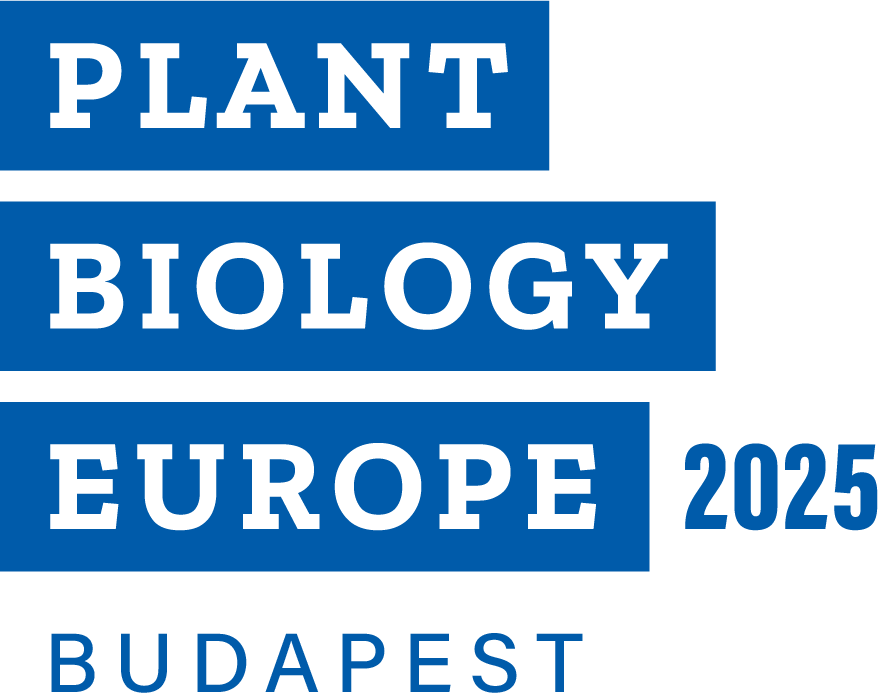
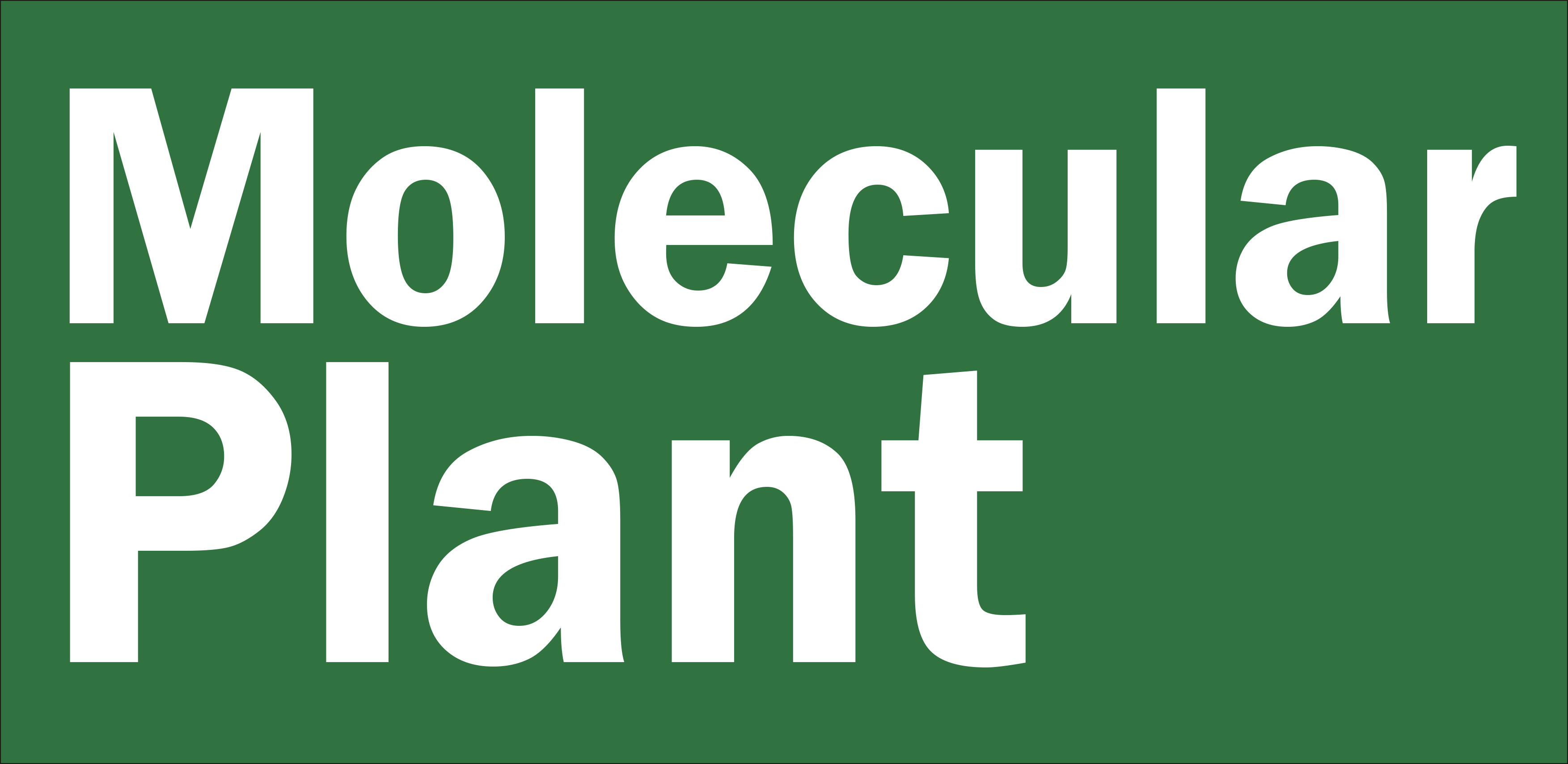
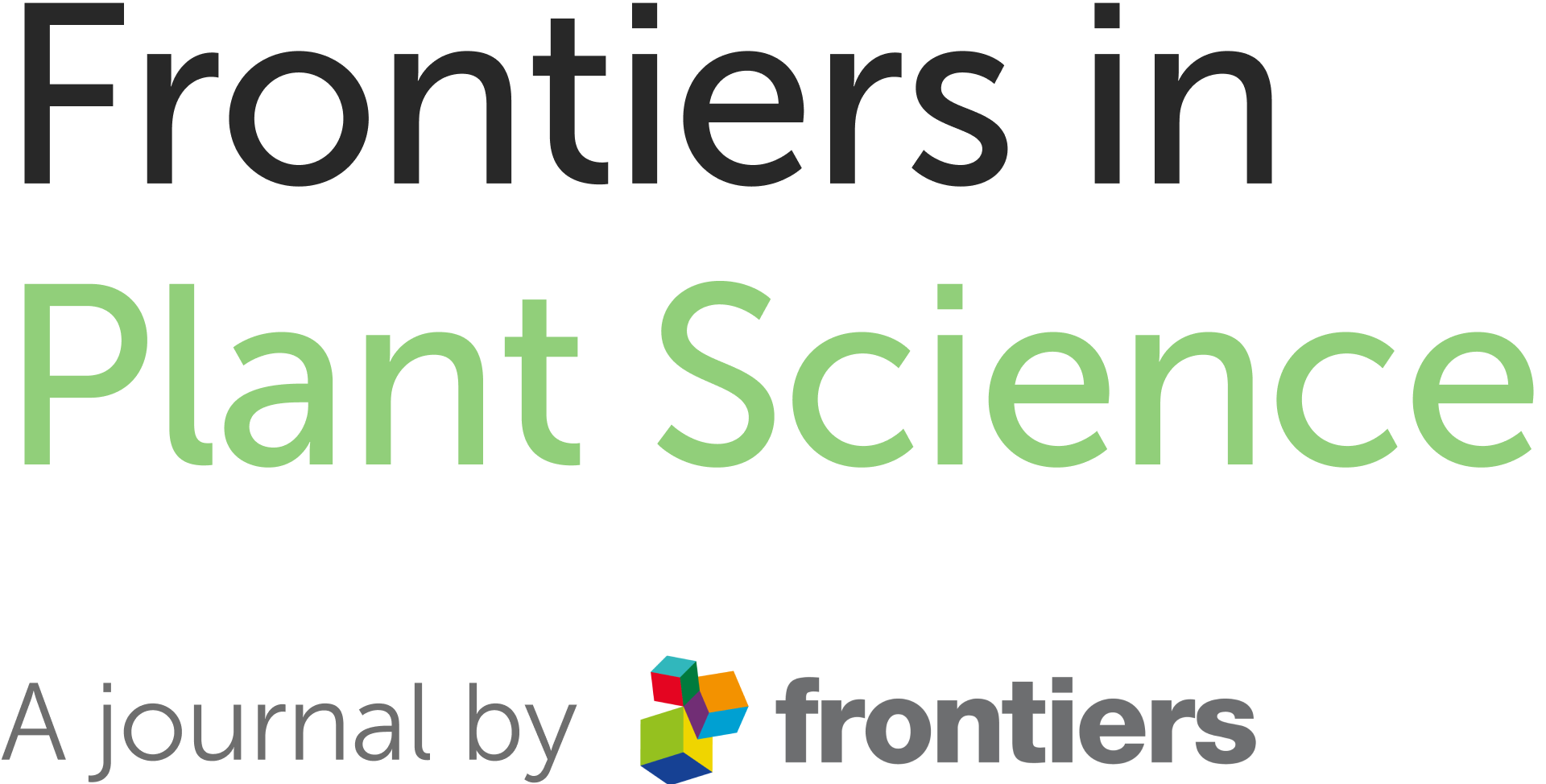




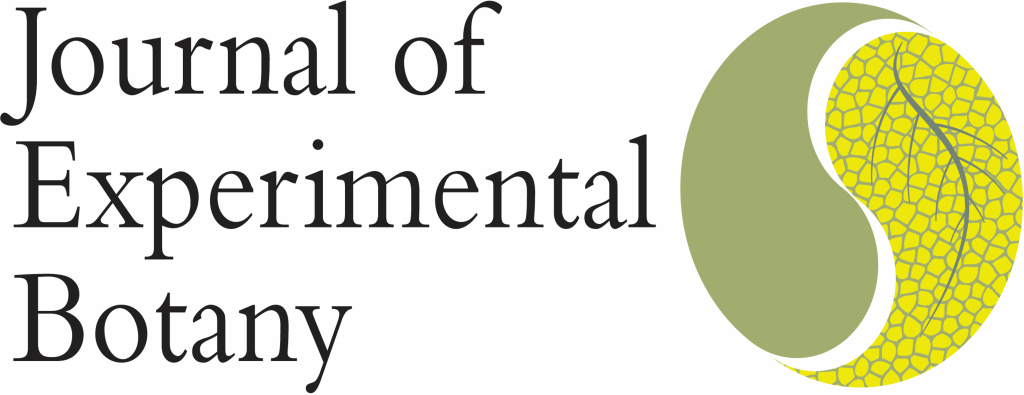





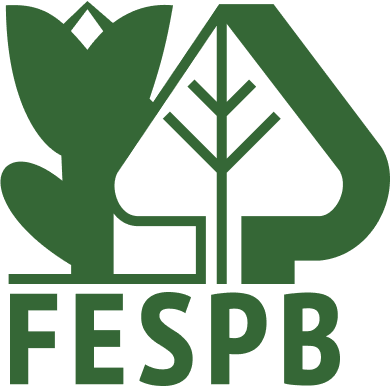 The Federation of European Societies of Plant Biology (FESPB) was established in 1978 and is now Europe’s largest and most comprehensive society representing plant scientists. Its mission is to promote research, education, and the exchange of knowledge among plant biologists, both within Europe and globally. FESPB also supports the dissemination of research findings through its associated international journals, including Journal of Experimental Botany, Journal of Plant Physiology, Plant Physiology and Biochemistry, Physiologia Plantarum, and Plant Biology.
The Federation of European Societies of Plant Biology (FESPB) was established in 1978 and is now Europe’s largest and most comprehensive society representing plant scientists. Its mission is to promote research, education, and the exchange of knowledge among plant biologists, both within Europe and globally. FESPB also supports the dissemination of research findings through its associated international journals, including Journal of Experimental Botany, Journal of Plant Physiology, Plant Physiology and Biochemistry, Physiologia Plantarum, and Plant Biology.